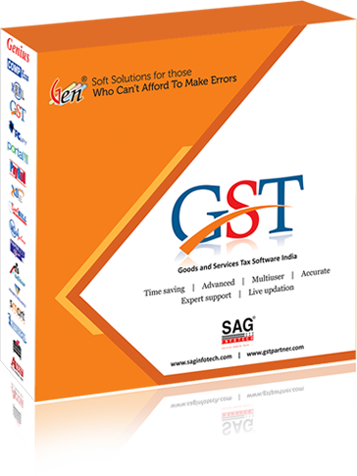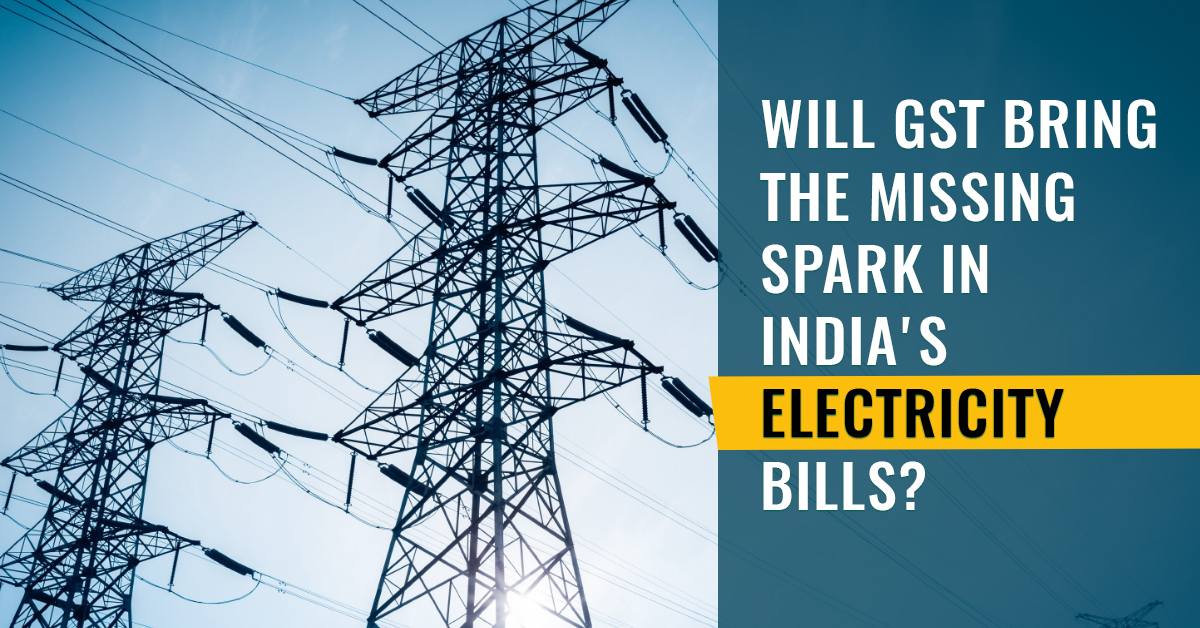Will GST Bring the Missing Spark in India’s Electricity Bills? “To Be or Not To Be” – Shakespeare’s famous lines appear to fit aptly on the present taxation regime in India. It has been more than six months since the GST tax was implemented, but the GST council has still refrained from bringing real estate and electricity power sector under the new tax regimes radar. In all fairness, GST was a paradigm shift in the Indian Taxation History. And the Government should be given some credit for overcoming the transitional roadblocks. Also from time to time, necessary changes have been made to the tax slabs to address the taxpayers grievances.
The benefits of the new tax regime are supposed to trickle down to the consumers at the end. However, we can’t turn a blind eye to the impact power sector has on the end cost of Goods And Services. If estimates by experts are to be believed, bringing electricity under GST roof would save the taxpayers around 30,000 crores per year. This article tries to understand the ins and outs of the commercial and industrial electricity tariffs in India and in the process draw a clearer picture for the reader to decide whether the GST council should impose GST on electricity.
Contents
The Electricity Tariff Web
The Constitution grants India a semi-federal structure. The Centre enjoys unitary authority but not on everything. The states have their own rights in certain specific governance matter. Before the GST regime, the Indian tax structure embodied this semi-federal ideology. The exclusion of electricity from GST means that the confusion over the right electricity tariff still prevails. On a lighter note, there is a saying that after every 40-50 kilometers, the language, dialect, music, food, clothes changes in India. The same can be to some extent said about the state of electricity bill tariff in India.
Electricity taxes change with state borders and in different categories i.e high tax for industrial users and low tax for consumers. The tax imposed by the states vary from 0% to 25%. The electricity is a good source of revenue for states adding almost up to up to Rs. 31,000 crore (considering the combined collection of all the states). The electricity taxes of states covers 3% of total tax collection and for some states, it goes up to even 9%. This is the reason states do not want to demit the right to impose these taxes. Also, states impose large tariffs on industries and in the process hampering the government’s Make in India initiative.
Cascading Tax Increases Burden
The cost of production for industries increases twofold as they include the input taxes they have paid for the formation of the electricity supply chain. This excessive cost is passed on to the consumer. Electricity is not part of the GST, hence there are no input input-tax credit benefits to be claimed for the business owner. The burden is passed on to the consumers who end up paying a higher price for Goods and Services which are dependent on electricity.
The taxes on electricity supply include taxes on solar panels, batteries, raw materials (coal, renewables), and other equipment involved in the procedure.
In the textile industry, this consolidated tax accounts for an additional 2% in the final selling price. Manufacturers selling products in the local market are most affected by it. Further, exporters are not eligible for any duty or reduction benefits. The market competition further hampers the export of particular electricity products as they are not eligible for any duty for taxes consolidated in exports. The cascading taxes create a double setback for industrial buyers of electricity.
The final blow to the manufacturers and industries is dealt by ruling political parties in the respective states. The interference in electricity taxes for political gains or easy electorate votes make consumers (and other users in agriculture) to pay nothing or a little for utilized electricity.
As a repercussion, the industrial users are charged high to overcome the losses for under-charging from other consumers. Finally, also considering more additive effects of cross-subsidization, the total tax tantamounts between 1-3% higher than actual consumption charges for some industrialists. This increase in the cost of production cannot be ignored by most industrialists and as for exporters who sales the products internationally even a 1% increase in cost results in ferocious competition for them.
Change in Policy Objectives
The GST Council has been reflecting on the prospect of GST levies commercial and industrial electricity for some time now. India is a developing country with high GDP but low PPP. Hence, the countries energy policies cannot alienate the renewable sources from the tax framework.
Subsidizing renewable sources can only be apart of the solution. The government in future will surely have to contemplate on the possibility of levying GST on electricity.
GST policy favors the renewables and this can be a positive move to include electricity bill under GST. The GST rate for renewals is 5% whereas inputs to thermal generation levy a comparatively higher rate i.e 18%. The sensible move ahead would be to assist more renewables. However, the government’s current policy of subsidizing renewable energy services across different verticals accounts for a troublesome situation to measure the overall support.
The GST appears to be trying to fulfill many objectives in a single stroke. This at times forces policymakers to levy impractical GST rates on renewables and non-renewables alike.
Hence, the administrative approach should be direct, conscious and transparent.
Both forms of electricity should be treated at par by the policymakers as well as the GST Council. Both sectors should receive an input tax credit as well. The result will make GST as transparent for all forms of electricity generation.
Impact of GST on Electricity Bills
Input tax credits are great for consumers but the central government has to bear the overall losses. Embedded tax forms will be reduced or removed with the inclusion of electricity bills in GST.
As a result, the Central and State governments will definitely lose revenues and the benefits will be transferred to the businesses as input tax credits. Besides, the state government will not be getting the electricity taxes benefits as well. There are two solutions for this.
1. The Center and The State bears the all losses as the benefits will be shared between state and government as well and the center can compensate state governments for direct losses or
2. Allow the State Government to impose a cess on electricity products up to an extent only. GST council can impose 5% tax on electricity products, let the inputs tax credits move through the GST smoothly.
However, greater cess will cause the same problem for end consumers. Hence in both the situations, the center will be in loss because basically it would lose from embedded taxes exclusion and paying states compensation for the direct loss.
Recommended: GST impact on electronic industry
Final Verdict
The good thing about policies is that they can be updated and at times replaced by better ones.
GST is still in its infancy and against all transitional odds, the market seems to have gained back its lost momentum. The government is required to wait till GST revenue stabilizes. Next, fiscal year will be perfect to start a discussion on the issue. The four clear-cut benefits of electricity inclusion are:
1. Removing the large biases.
2. Reducing the cost of production.
3. Enhancing the competitiveness of exporters.
4. Reducing the cross-subsidization of electricity tariffs.
This will help manufacturers and exporters to survive global competition. Considering the benefits, the decision would reinstate the neutrality of incentives in electricity production. The State government will incur substantial loss but the need of the hour appears to be the inclusion of electricity in GST. The growth of manufacturing sector in India is very intricately tied to production costs. The GST coverage for the electricity industry will go a long way in levitating the Indian Manufacturers products to big global platforms.






